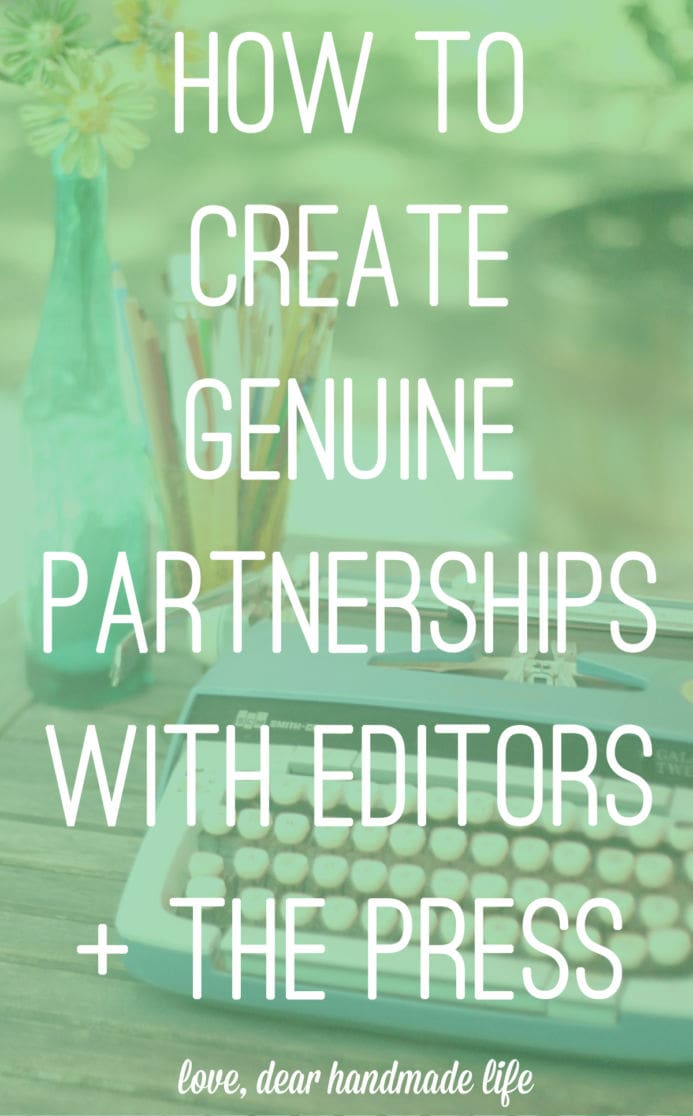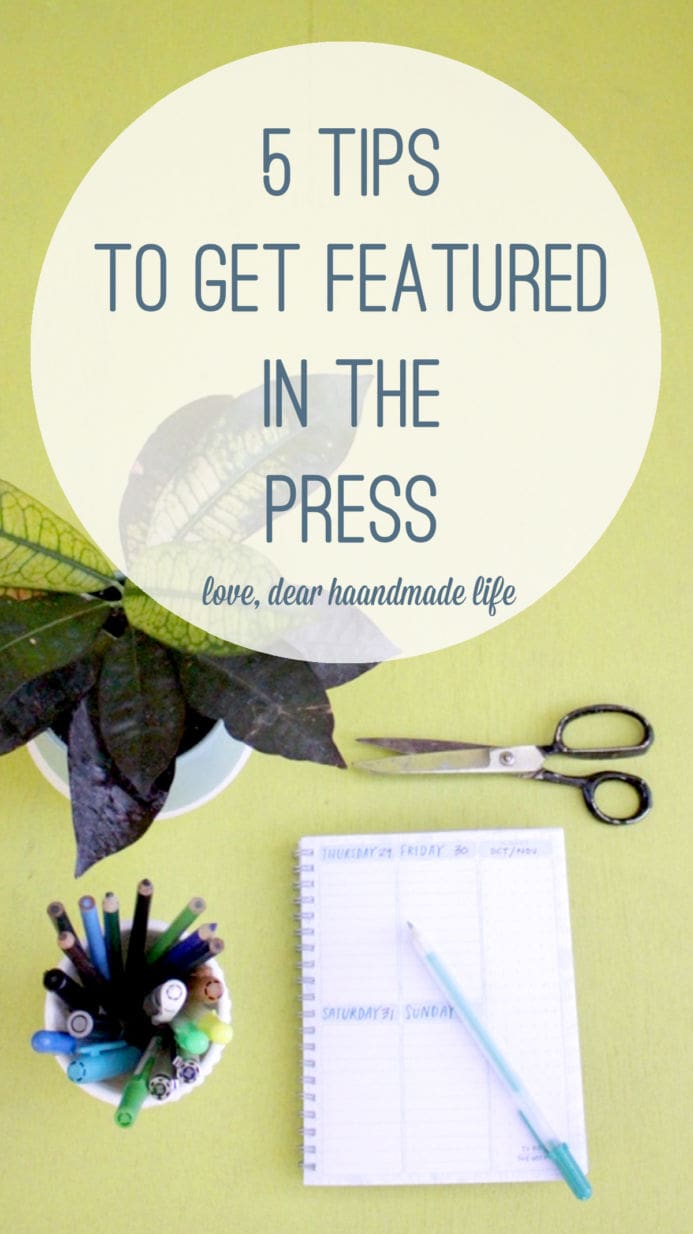How to Create Genuine Partnerships with Editors and the Press
By: Rebecca Pitts of Hudson + Daughter
Whether you’re pitching your products to be featured in media outlets, or submitting original craft projects to trade magazines, connecting with editors can sometimes feel a bit mysterious, or worse, futile—like you’re sending your work into a black hole, or playing the waiting game and hoping to be “picked.”
But it doesn’t need to feel like this—landing press mentions and features is a craft like any other. It takes some foresight, planning, and work, sure, but it’s not impossible to reach those dream media outlets.
Here’s how I’ve gone from working in an entirely different industry for over a decade, to starting a new career as a writer and a children’s product designer with zero press contacts in my pocket, and now, two years in, having my work and ideas featured in the Easy Seller Handbook, Country Living, and the Craft Industry Alliance (not to mention here at Dear Handmade Life.)
It starts with traction. In the beginning, your efforts should be focused on getting that very first press mention. Don’t be turned off by starting small—a local newspaper, a regional magazine, or an indie publisher are wonderful places to start. Once the first few press mentions go live, you’ll be better positioned for that bigger media outlet you’ve been waiting for. Everything gets a little easier with a little traction.
Getting OK with rejection. Pitching is a numbers game—you’ll be sending out a lot of queries, especially at first, and at times this may feel like an endless process with little to show for your efforts. When I’m in this place, I try to remind myself that rejection, too, is a form of progress. Tiffany Han has done a tremendous amount of work to surface this truth with her idea and book “100 Rejection Letters.” The consistent practice of pitching is a necessary step on the way to landing a feature. You’ll soon learn that actual rejection doesn’t hurt as much as the idea of rejection.
People matter. A whole lot. Cultivating genuine relationships with the people you care about is something that almost everyone values and appreciates. Depending on the season of life we’re in (I for one am a mom to two young kids and am growing a small business) it may be the first thing we drop from our schedule. But it’s worth investing a bit of time each week or month in this area, first and foremost for your own happiness. You might be surprised at the indirect benefits that can come from this investment, too—it’s people, after all, who can make an important introduction. But careful though, it’s important to approach these relationships without any expectation about what someone can do for you. In fact, you’ll probably be better served by asking yourself: what can I do to help this person succeed in her business? If you’re not finding these connections in your geographic area, hop on the forums on the membership site Craft Industry Alliance, or a free Facebook Group like Meighan O’Toole’s, or an in-person event like Craftcation.
The blind pitch can work. It’s not always who you know. Really. Sometimes, a pitch to a person whom you’ve never met or talked with can actually hit the mark. The key here is to have done your homework in advance by understanding the publication’s voice and its readers’ interests. Updating a pitch template won’t cut it. Be honest with your own interests—follow your genuine curiosity in the magazines, journals, and publications you’re after. It will show. Try following a handful of publications and blogs that you love, and would love to see your work or ideas featured in. Get to know them. Catch their vibe, get a sense of the voice and the aesthetic. Most always, if you’re a real fan, you’ll organically stumble upon a call for submissions or an opportunity for partnership.
Editors are people. Editors have a lot of power, sure. But they’re also just people, who are excited to showcase and partner with talented makers, writers, and artists. So go ahead and promote yourself proudly, but be sure to keep it short, friendly, and professional. If you don’t hear back, it may be worth sending a brief follow-up email before pitching the piece elsewhere. When pitching new products, many editors love to feature up-and-coming designers and makers that aren’t in every major magazine. So less press can actually work as an advantage here! Whether you’ve secured a feature or not, continue to check in every few months with new ideas or pitches and maintain the relationship with the long-term in mind.
What are your tips for creating lasting and genuine partnerships with editors and the press? Anything we’ve missed? We’d love to hear!
About Rebecca:
Rebecca Pitts is a writer and children’s products designer. She is the founder and creative behind Hudson + Daughter. Each month, she sends an exclusive letter to friends who write, make things, or want to. Join her list here or visit her online home at rebeccaapitts.com.




